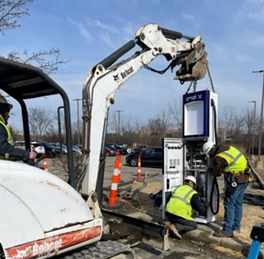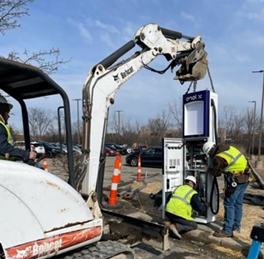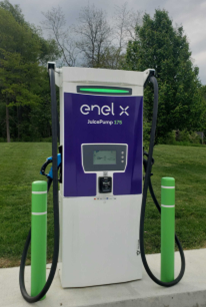
The electric vehicle (EV) market is booming in the U.S. As more consumers switch to electric, the need for rapid, efficient, and accessible charging solutions has never been more pronounced. Enter the DC fast charging (DCFC) station, a key player in promoting the widespread adoption of electric vehicles. In this article, we’ll dive into the process of installing commercial DCFC stations and explore their impact on the American EV landscape.
What Is a DC Fast Charging Station?
Before delving into the installation process, it’s important to understand what DCFC stations are. Unlike Level 1 and Level 2 chargers, which use alternating current (AC) from the grid, DC fast chargers convert AC to direct current (DC) before delivering it to the vehicle. This process allows for shorter charging times, typically replenishing an EV battery in less than 30 minutes, depending on the battery capacity and the charger’s power rating.
The Installation Process for DCFC Chargers
- Site Selection: The first step involves identifying a suitable location. High-traffic areas like shopping malls, restaurants, and highway rest stops are prime candidates. Proximity to the power grid is also crucial.
- Permitting and Regulations: Commercial property owners must obtain the necessary permits. This can involve local building permits, environmental assessments, and sometimes state-specific permissions.
- Infrastructure Development: The site often requires some infrastructural changes before installing the charger. This can include trenching for cable lines, setting up transformer units, and ensuring reliable connectivity to the grid.
- Station Installation: The actual charger unit can be installed once the groundwork is complete. This involves setting up the charging columns, connecting them to the power source, and integrating any software for payment and monitoring.
- Testing and Commissioning: Before public use, the station must be tested for safety, efficiency, and reliability. This step ensures that the station delivers power as expected and is safe for both vehicles and users.
The Benefits of Commercial DC Fast Charging Stations
- Consumer Convenience: DCFC drastically reduces the time EV owners spend charging their vehicles, making the EV experience more akin to traditional refueling.
- Increased EV Adoption: The availability of fast chargers can reduce range anxiety and might encourage more consumers to consider EVs as a viable alternative to gasoline-powered vehicles.
- Business Opportunities: For businesses, installing a DCFC station can increase foot traffic, potentially boosting sales and fostering brand loyalty among environmentally-conscious consumers.
The Electric Road Ahead
The U.S. is at a pivotal moment in the EV revolution. As battery technologies advance and EV prices continue to drop, the importance of reliable, rapid charging infrastructure cannot be overstated. Commercial DC fast charging stations are not just a response to current market demands; they’re an investment in a sustainable, electric-powered future.
As more businesses and municipalities recognize the value of these stations, we can expect a more robust and interconnected charging network across the country, driving the nation towards a greener future.
Looking to purchase and/or install DCFC infrastructure? Contact State Electric Company for a consultation and free quote.
State Electric Company is a leader in the electrification of the nation. Our highly educated and experienced team of professionals uses industry-leading software technology and has partnered with manufacturers to deliver affordable solutions for all your electrical needs. State Electric Co. is also an exclusive distributor of Enel X JuiceBox EV chargers for residential and commercial use. We are fully licensed, insured, and bonded to install charging stations for homes, offices, hotels, and more. With our extensive knowledge of renewable energy, our team provides customers – large or small – with efficient electrical solutions. Contact us today to learn how we can safely and affordably meet your energy needs.
Written by the digital marketing team at Creative Programs & Systems: https://www.cpsmi.com/


